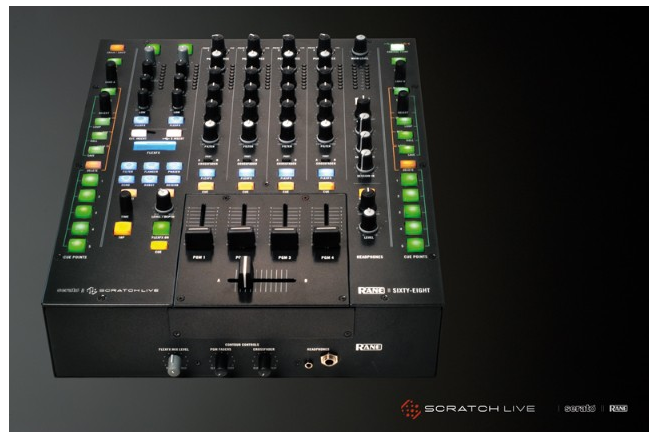
As a DJ who spins at a lot of different clubs, I tend to evaluate the establishment based on their sound and equipment. I never understand why a club would have a sub-par mixer, which is essential to a DJ’s performance. Some clubs have out-of-date, clunky, s**ty mixers, while others have the latest and greatest. In an effort to help some club owners art, I have news on Rane’s new club mixer, The Sixty-Eight. It’s dope, and if I had a club I would stock this bad boy… Check out the features:
Rane and Serato welcome the Rane SIXTY-EIGHT, the ultimate club mixer. Two computers, two USB ports, up to four decks and a range of effects.
Introducing the first Scratch Live compatible DJ mixer that allows two computers to be connected simultaneously.
Using two USB ports, the new Rane SIXTY-EIGHT mixer lets two DJs play Scratch Live at the same time, allowing for seamless handover from one DJ to another. You can also control up to four decks with a single laptop.
Armed with studio-grade phono preamps, USB and S/PDIF inputs, the SIXTY-EIGHT can allow a blend of analog and digital audio sources like never before. The Rane SIXTY-EIGHT features easy to use internal digital effects, and direct control of over 30 Scratch Live library, cue and loop functions.
Features:
- Two independent USB 2.0 high speed ports, each supporting twenty two, 32-bit floating point audio channels at 48kHz.
- Support for the connection of two computers simultaneously.
- Direct control of over 30 Scratch Live Library, Cue and Loop functions.
- Support for 2, 3 or 4 Virtual Decks in Scratch Live.
- Flexible USB recording options.
- 3-band, full cut EQ
- New High-pass / Low pass Filter
- Unique FlexFX bus with 6 internal effects plus USB and analog insert support for computer-based effects.
Input Channels
- Four stereo Phono/CD inputs of Line / Phono or S/PDIF.
- Four stereo Auxiliary inputs.
- Four stereo USB playback options.
- Two independent microphone inputs – one with phantom power and one with line-level input
